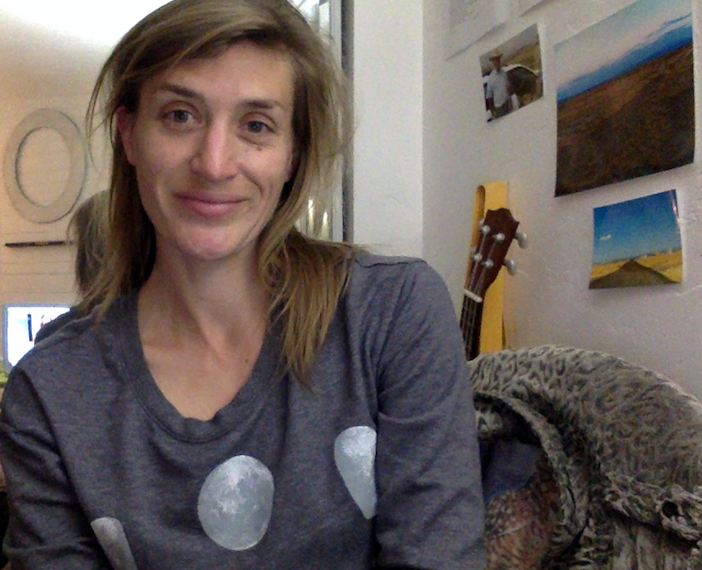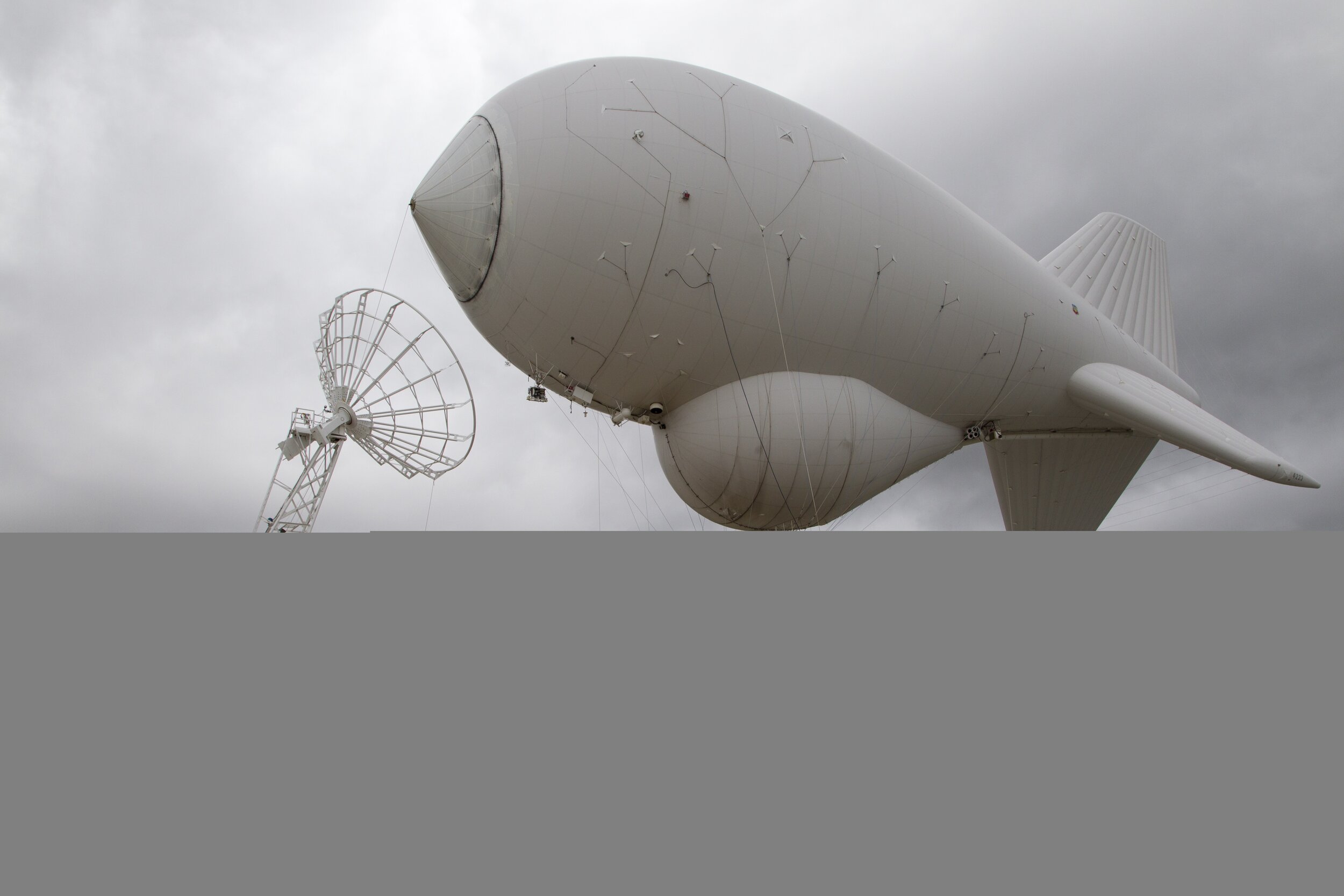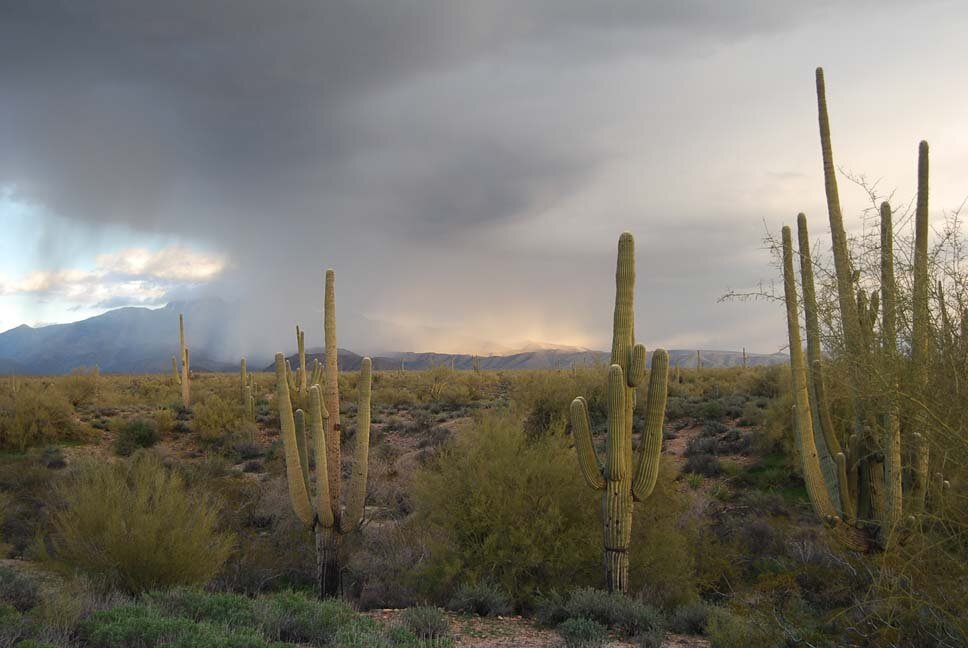GUEST POST BY MIRANDA TRIMMIER

THE LIE OF THE BORDERLANDS
By Miranda Trimmier
The TARS blimp that floats above Fort Huachuca, Arizona looks cartoonish. It might be mimicking a friendly fish or beluga whale. It could be advertising used cars or trailing a wedding proposal. A brother blimp in Marfa is featured on Roadside Attractions, Your Online Guide to Offbeat Tourist Attractions. If you didn’t know its purpose, you might look up on a sunny day, see the brilliant white balloon set against a cloudless blue sky, and smile. But the blimp is the Tethered Aerostat Radar System, one in a string along the border that have for the last thirty years watched for low-flying drug planes. Border Patrol calls them their “eyes in the sky,” and they are just one manifestation of the ongoing militarization of the southwestern US.

Earlier this summer I took a trip to southern Arizona with Kat and Logan, two fellow Tucson writers. On our first day we stood in the San Rafael Valley looking down at a grassland parched golden in the pre-monsoon heat. Logan, who grew up near Fort Huachuca and was a student of the landscape, pointed out the mountain ranges. Patagonias, Mustangs, Huachucas. On the other side of the Huachucas, he said, was the TARS balloon. Growing up, Logan’s dad had a recurring nightmare in which the blimp popped and fell to earth, suffocating the towns below.
A real-life accident isn’t out of the realm of possibility. In 2011 the Huachuca TARS exploded and rained giant scraps of Mylar on nearby subdivisions. And yet the nightmare vision seems an apter way to describe the reality of places like southern Arizona, where a drug war begun in the 80s blurs into a war on immigrants and asylum seekers begun in the 90s blurs into a war on terror begun in the aughts. The Border Patrol betrays this muddle in the vague and scary bureaucratese with which it articulates its mission; the country’s now-biggest law enforcement agency exists, in its own mind, “to safeguard America’s borders thereby protecting the public from dangerous people and materials.”
Over the course of our trip, Kat and Logan and I tread two research tracks. On the one hand, we thought about land; we studied area mining and ranching histories and met with groups addressing the aftermath of overgrazing, erosion, and disappearing groundwater. On the other hand, we thought about immigration politics; we met with advocacy groups and visited the wall and traveled accompanied by a soundtrack of brutal crisis news. The effect of toggling back and forth between the two investigations was disorienting. Most days they felt separate — or, if connected, vaguely so, threaded together somehow, somewhere in the grand weft of capitalism and empire.
The tire trailer changed that. We passed it on the drive to see the wall: two rows of four tires racked on a metal frame and stored at a roadside turnaround. Border Patrol rakes the ground with it, Logan said, so they can see people’s footprints. A mile down the road was another trailer, a literal rake, big and rusted and ready to mold the land to the task of tracking and arresting immigrants and asylum seekers. Such tools, it became clear, were a ubiquitous part of the landscape. Check points, barbed wire. Towers strapped with cameras and radar and remote sensors. Helicopters and a swarm of CBP trucks, white and green pickups tearing everywhere, supplemented by an untold number of ATVs and drones. To spend time in southern Arizona is to witness a place given over to the logic of border security. The surveillance and detention of immigrants doesn’t just happen here; it is a land use, the land use. As “the border” has become an increasingly abstracted stage for political theater, the borderlands have absorbed billions of dollars of investment that structure it in countless material ways.
One morning, we bumped up and down dirt service roads in a truck owned by a humanitarian aid group, checking water levels in a series of blue barrels. I sat in the back. In the seat pocket in front of me was a sheaf of “death maps,” marked with red dots for each body recovered over the last two decades in Arizona. 3339, a fraction of the likely total. People didn’t always cross the border in the remote reaches of the desert; it was Operation Gatekeeper, the securing of urban ports of entry, that pushed them there. In early internal documents, Border Patrol officials predicted the policy would kill people. And so even the desert’s “natural” elements are put in service of border security. Heat and sand and rock and cacti become its infrastructure, an environment engineered to organize and accomplish government violence.
The geographer Don Mitchell writes of the “lie of the land”: the way a landscape is shaped by and hides violence. Mitchell was writing about migrant labor struggles in early and mid-twentieth-century California, when farmers first recruited and came to rely on Mexican workers to cultivate their fields. Those workers made California’s unprecedentedly gigantic farms fantastically productive; to the rest of the country, the state came to represent an agricultural Eden. For that image of California to stand, and the economic and political interests underwriting it to stay in power, a lot had to be removed from view. That migrant labor had to be underpaid and exploited for the state’s farm economy to function. That workers resisted and that their resistance was suppressed. The erasure happened, Mitchell says, not just ideologically but through infrastructural investments. After a series of crippling strikes in the 1910s, California formed the California Commission of Immigration and Housing to reform and rationalize the migrant labor system. CCIH focused on worker camps, developing standards that improved living conditions but also made it easier to watch and control people, and, when geography alone failed, subject them to brute force.
As a writer I often think about the failings of popular border representations, those tropes that seem to short-circuit the sort of engagement that might make real change. The ones that “humanize” humans, or flatten complex violence into simple spectacle, or can’t quite grasp the structural conditions at hand. If reactionary and xenophobic stories fuel the lie of the borderlands, these tropes do too little to challenge its frame. But what’s needed isn’t just abstracted storytelling work. For Mitchell, upending the lie of the land demands attention to its intimate materiality, too. In the case of border militarization, it demands attention to the specific ways border security gets built into the landscape, and the ways that infrastructure becomes more and more physically entrenched.
Back in Tucson, Kat and Logan and I gathered in DeConcini Courthouse to watch an Operation Streamline proceeding. Every day, up to 75 people are deported in mass trials for trying to cross the border. We sat at the back of a carpeted room with a vaulted ceiling that seemed designed to swallow all sound. Up in front, a judge mumbled charges and plea instructions to a group of mostly young men. Each wore T-shirts and handcuffs shackled to their ankles; when the trial was over, each would have a US criminal record. The room rustled with defense attorneys, guards, and a translator: representatives and reminders of Tucson’s urban security infrastructure, the jails and shelters and processing centers and legal service offices. DeConcini Courthouse is part of this network, constructed with the help of the federal funds that have flowed into the city as part of the border build-up.
The proceedings took little more than an hour. Afterwards, the judge descended from his stand and approached the benches where the public sat. He leaned on a cane and had a white nicotine inhaler clamped between his teeth. “So,” he said, “What are your questions?” We asked and he answered until, eventually, all that was left was the fluorescent humming of the room. “Look,” he said, sounding tired, “The people who like this policy don’t come to court. If you don’t like it, you have to do something. This is your country.”
Sources: Besides Field Studies research trips, I’ve written this blog post with the help of Jason de León’s Land of Open Graves, Aaron Babrow-Strain’s The Death and Life of Aida Hernandez, and Don Mitchell’s The Lie of the Land.

